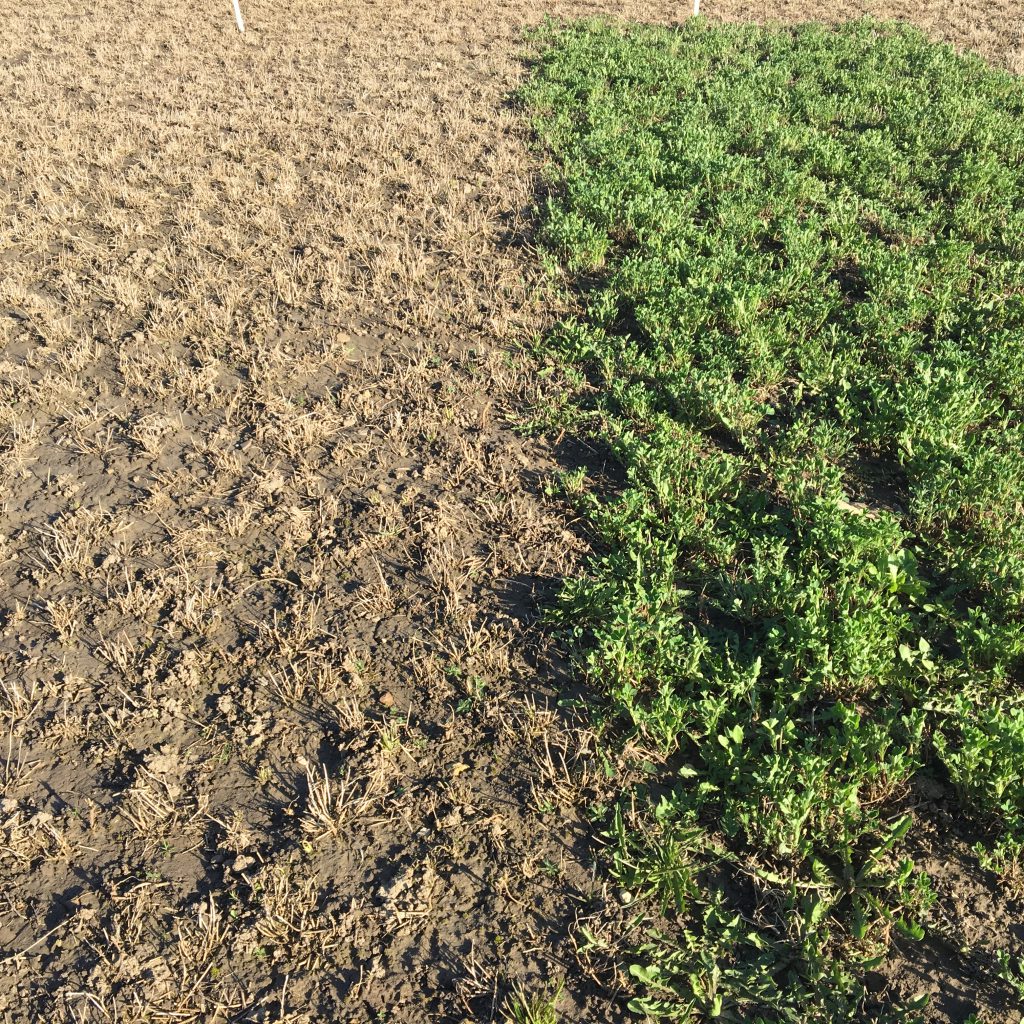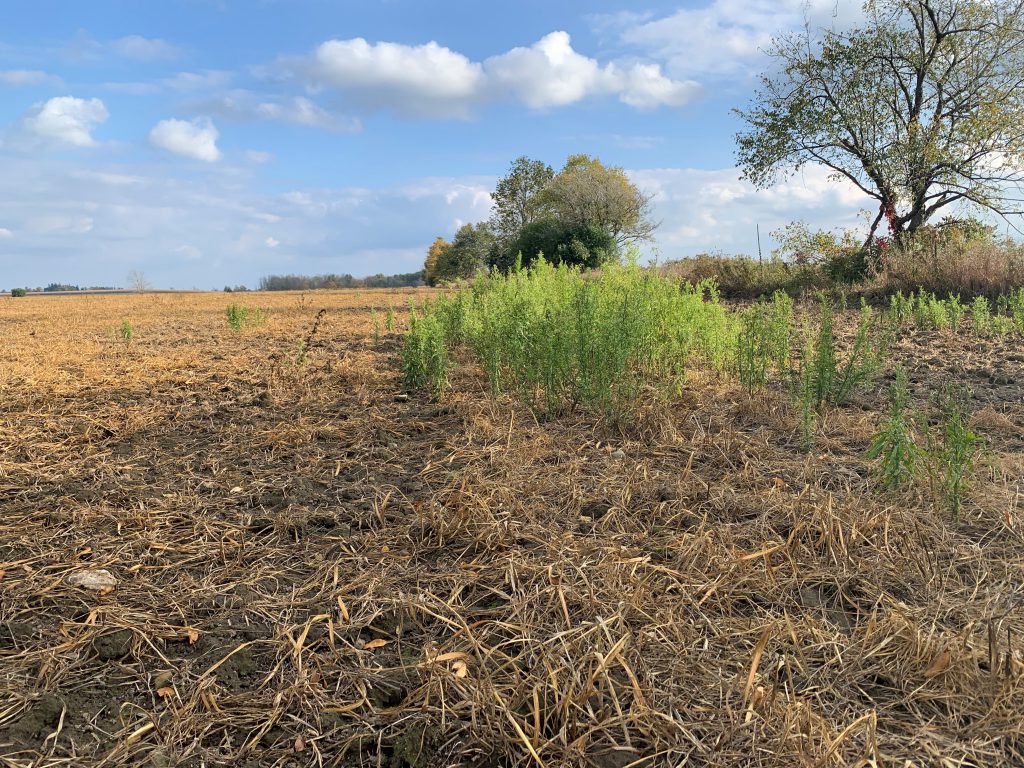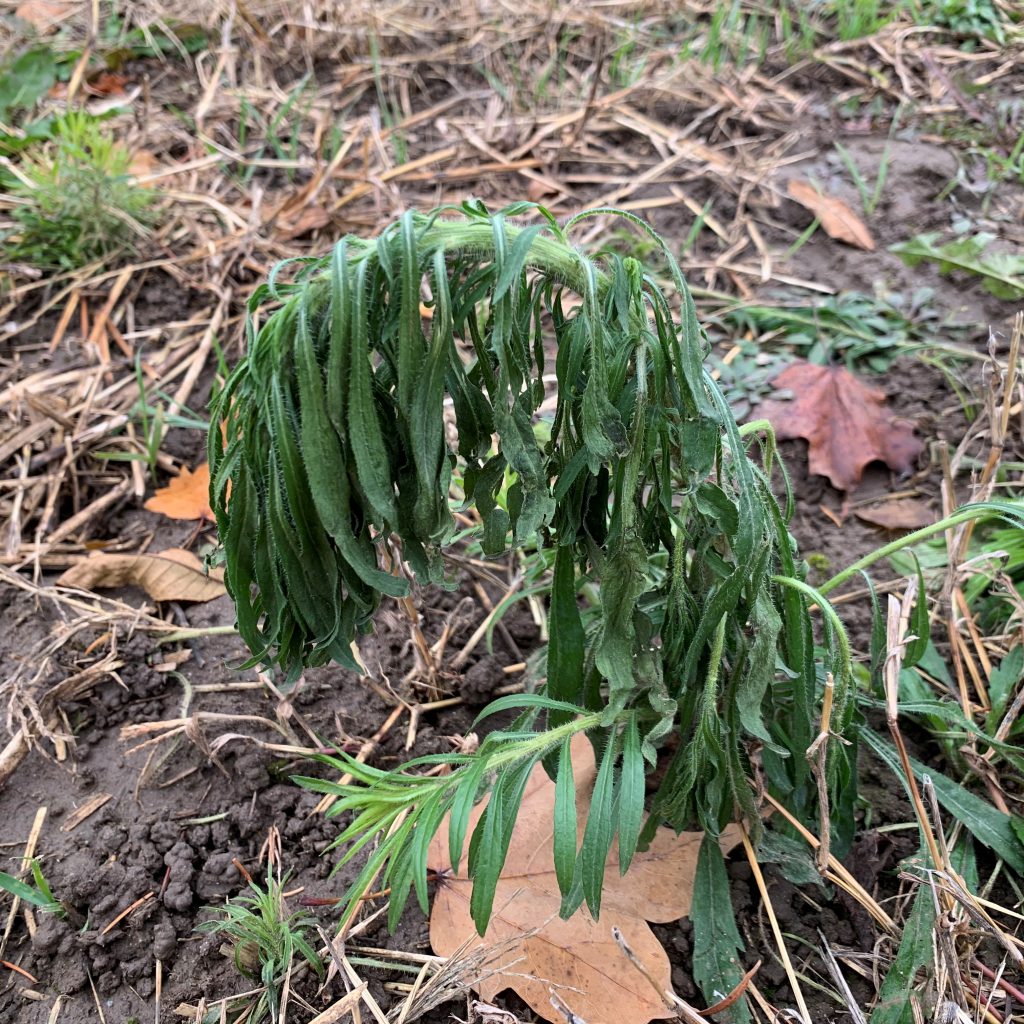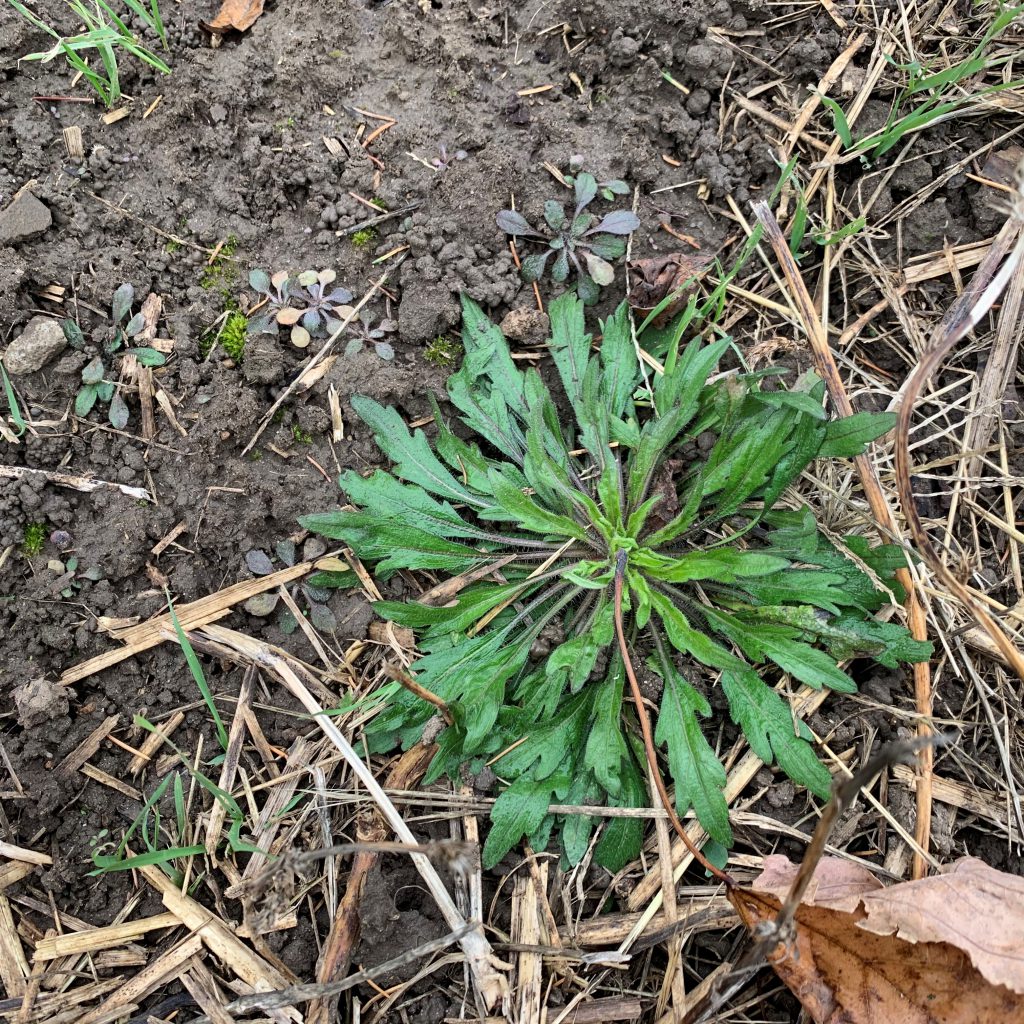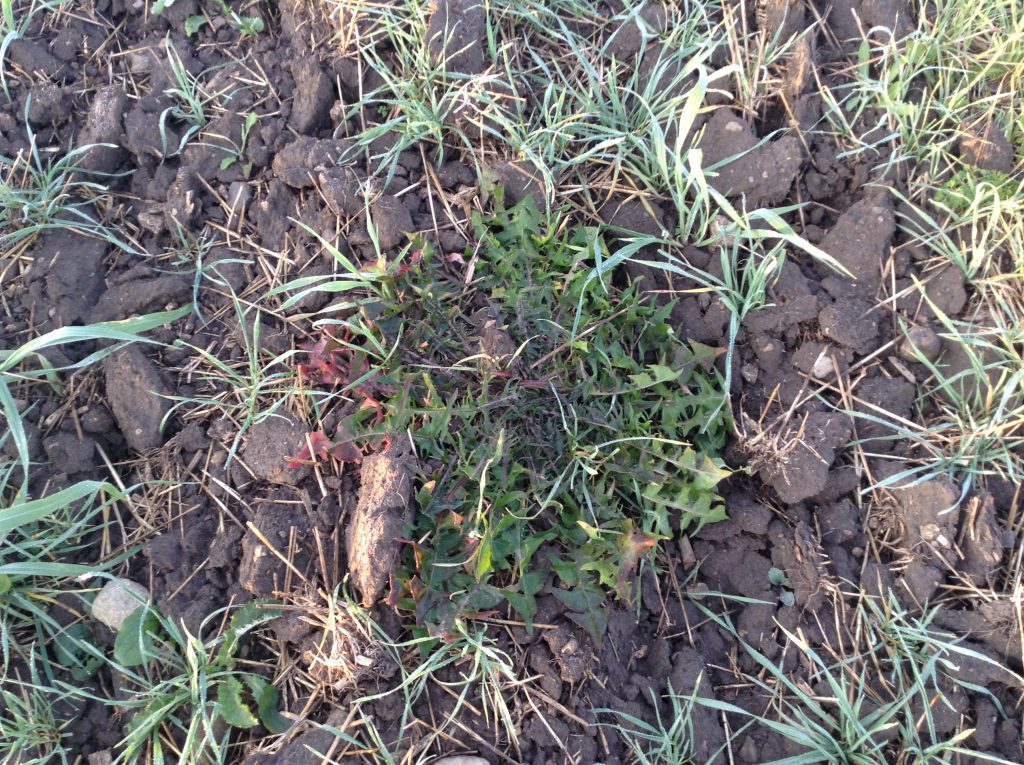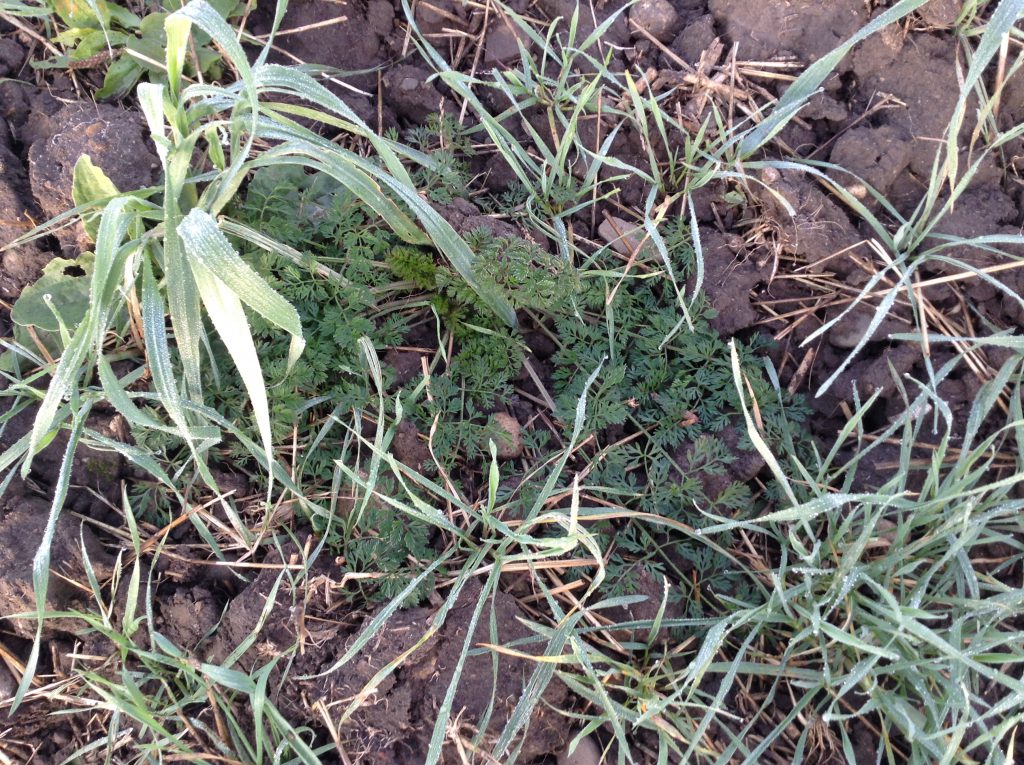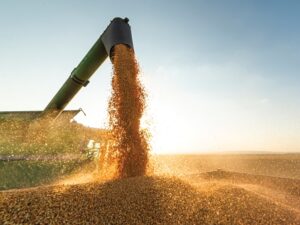Weed control tips
FALL MANAGEMENT

Many farmers have witnessed the value of applying herbicides in the fall for the management of winter annual and biennial/perennial weeds (Figure 1). Often, they will see both a reduction in density and a delay in shoot emergence the following spring. This allows a spring planted crop to have a competitive advantage over those undesirable weeds. Unfortunately, weather conditions around the time of application can be quite variable and can influence a herbicide’s effectiveness. Let’s go through five “top tips” to make the most of this application window.
TIP 1
Choose the most effective products, rate, and tank-mixes for the target weeds. Glyphosate is usually the “foundation” of any fall herbicide application. When applied alone, a rate of 1,800 grams of active ingredient per hectare should be used when targeting perennial or biennial weeds. That rate is equivalent to applying Roundup Transorb (glyphosate @ 540 g/L) at 1.34 L/acre. The addition of a tank-mix partner will depend on the target weed species, and is required for glyphosate resistant weeds that overwinter, such as Canada fleabane (Figure 2). Table 1 provides a summary of weed species that can benefit from a tank-mix partner.
| Weed | Tank-mix partner |
| Alfalfa | 2,4-D, dicamba (e.g. Engenia), clopyralid (e.g. Lontrel XC) |
| Bluegrass | Zidua SC |
| Burdock | 2,4-D, dicamba (e.g. Engenia) |
| Canada fleabane | Dicamba (e.g. Engenia), Distinct, Eragon LQ, clopyralid (e.g. Lontrel XC) |
| Canada thistle | Dicamba (e.g. Engenia), clopyralid (e.g. Lontrel XC) |
| Dandelion | None needed |
| Field bindweed | 2,4-D, dicamba (e.g. Engenia) |
| Ground cherry | dicamba (e.g. Engenia), |
| Henbit/Purple Deadnettle | Eragon LQ |
| Horsenettle | dicamba (e.g. Engenia), |
| Sow-thistle, Perennial | 2,4-D, dicamba, clopyralid (e.g. Lontrel XC), Express SG |
| Red clover | Dicamba (e.g. Engenia), Distinct, clopyralid (e.g. Lontrel XC) |
| Vetch | Distinct, clopyralid (e.g. Lontrel XC) |
| Wild carrot | Express SG |
TIP 2
When tank-mixing, be aware of any “plant back” or rotational crop restrictions for next spring. Table 2 outlines the plant back intervals required after application (in warm weather months) so that the desired field crop can be safely planted the following spring.

TIP 3
Apply when air temperatures are above 8˚C for a minimum of two hours after application. This is best accomplished by applying during late morning or mid-day so that the targeted plant is taking up herbicide during the heat of the day
TIP 4
After a frost event, wait two to three days before evaluating weed growth and if the target plants look fine and air temperatures are above 8˚C then resume applications. For example, a bolted Canada fleabane plant is very sensitive to frost (Figure 3), whereas a seedling rosette is quite tolerant to frost (Figure 4). It would not make sense to apply glyphosate to a weed species that has severe frost injury since the leaves are unlikely to absorb any herbicide. Fortunately, weeds like dandelion and wild carrot are tolerant to light frost events (figure 5 and 6), and applications to those species could resume if leaf tissue appears green and healthy.
TIP 5
Wait a minimum of 72 hours after application to perennial weeds before tilling the soil. The longer that you can wait after application before making a tillage pass, the more the herbicide will translocate within the plant and do a more effective job controlling the species.
